
If you’re struggling to build an audience online, prepare for a forehead-slap moment.
You’ve been ignoring Facebook.
Many of us think of Facebook as a place to catch up with distant relatives. But this means we forget Facebook is one of the most potent audience-building tools in the world.
With nearly 3 billion users, Facebook’s raw traffic potential rivals anything in the social media scene.
For many marketers, the solution is simple: build a Facebook audience. Then move that audience somewhere else, like a newsletter or a YouTube page.
But what if there were more you could do on the Facebook platform itself?
Enter Facebook Reels.
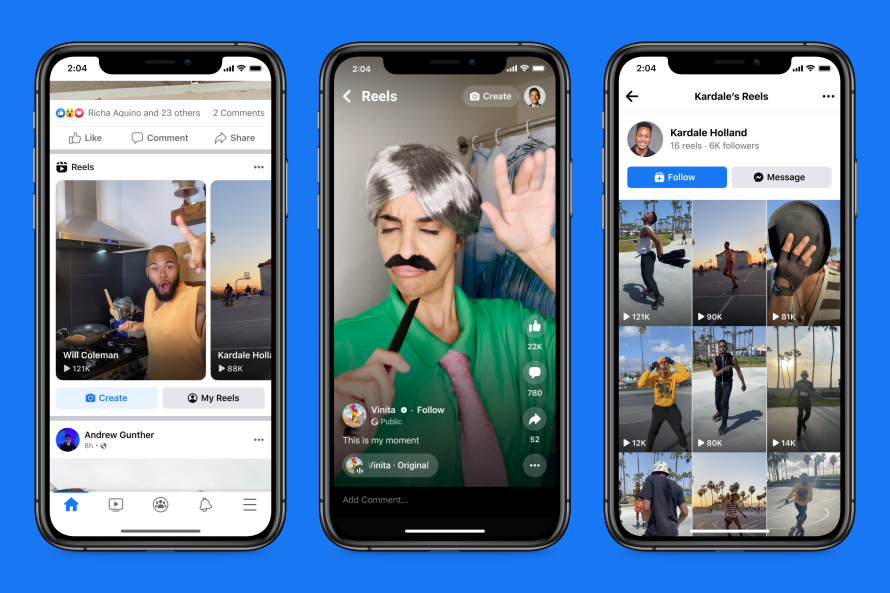
Facebook Reels are the platform’s answer to the short-form videos that are springing up everywhere. Think TikTok and YouTube shorts. On Facebook, you’re just as free to post fitness tips and brief podcast highlights as you are anywhere else.
There’s one advantage to creating these Reels: Facebook is serious about competing with those other platforms. And they pay like they’re serious.
That means your Reels can do more than attract an audience for your web presence. They can potentially open a new avenue for revenue streams that fuel your business.
Here’s how to monetize Facebook Reels the right way—and some strategies you can use to build a bigger audience on Facebook.
What is the earning potential of Facebook Reels?
Let’s start with the basics. If you’re going to earn money from Facebook Reels, you’re going to have to unlock monetization in the first place. That means having a bare minimum Facebook audience to work with.
For instance, Facebook introduced the temporary “Reels Play” bonus program on both Facebook and Instagram. That’s phasing out soon.
What’s next? Facebook says they’ll focus on a bevy of monetization features to keep the Reels money flowing to creators. We just don’t know what those monetization features are just yet.
What does that mean for you? Either way, you still have to meet Facebook’s standards if you plan on monetizing your short-form videos.
For Reels Play, eligible creators have been those who launched Reels with at least 1,000 views over a 30-day period. That’s an average of 33 and a third views per day—hardly unachievable, even for the beginner.
Reels Play was invite-only. So if you want a head start, you need to learn how to play the short-form video game by Facebook’s rules.
Review their guidelines to make sure you’re publishing Reels that can be monetized in the future:
- Prohibited formats: A Reel has to be a genuine video. That means no static videos (which are really just images), static image polls, slideshows of images, or even looping videos. The video should be straightforward—not a PowerPoint presentation.
- Restricted categories: Don’t take advantage of recent tragedies or debated social issues to grab quick views. Not only is it in poor taste, but it might mean you never get monetized in the first place.
- Suggestive/inappropriate activity: Facebook is a family-friendly place. Any language inappropriate for children can work against you. Sexually suggestive activity is also a no-go on the platform.
- Copyrighted content: Don’t steal a song to make an “original” video. Always start with fresh, original concepts, including new recordings you made yourself.
How much does Facebook Reels pay per view?
There’s no telling how much Facebook Reels will continue to pay when the bonus program runs out. But we can get a vague idea of what Facebook Reels has been paying out over the years.
For example, TikTok creators typically report getting $2-4 per 1,000 views.
How much does Facebook Reels pay per view? Typically Facebook has been higher, especially during the bonus program.
Nate Risch, for example, reported earning $4.11 on average per 1,000 views. And in some cases, people report getting as much as $10 per 1,000 views—though you shouldn’t necessarily expect that.
It’s a wide range that reflects a still-evolving situation at Facebook. But one thing is clear: it’s nothing to sneeze at.
Facebook has also used other programs to encourage more engagement with Facebook reels. For example, there have been cumulative challenges—a creator might earn $20 when having five Reels reach 100 plays on each video.
Think of it as a trial period for Facebook/Meta: it’s been using bonus programs to encourage more engagement.
And even with monetization still evolving, there’s still plenty to go around. According to TechCrunch, Meta is monetizing Overlay ads on reels, sharing 55% of the revenue with creators. (The remaining 45% is going to Facebook).
That means with Reels, you can expect to pay at least on par with TikTok, if not slightly better. But keep in mind that Facebook Reels are still in their infancy stage. It’s possible Facebook offers new programs that could change what you expect to earn with every view.
The conclusion? There’s money to be made here, especially if you already have an audience. In fact, Facebook’s been slightly better than other platforms when it comes to sharing revenue.
The Reels Play bonus program even paid creators up to $35,000 per month. But the invite-only feature is going away soon.
To ensure long-term success, rewind and focus on the fundamentals. That means learning how to get your Facebook Reels published ASAP.
How to get started with Facebook Reels
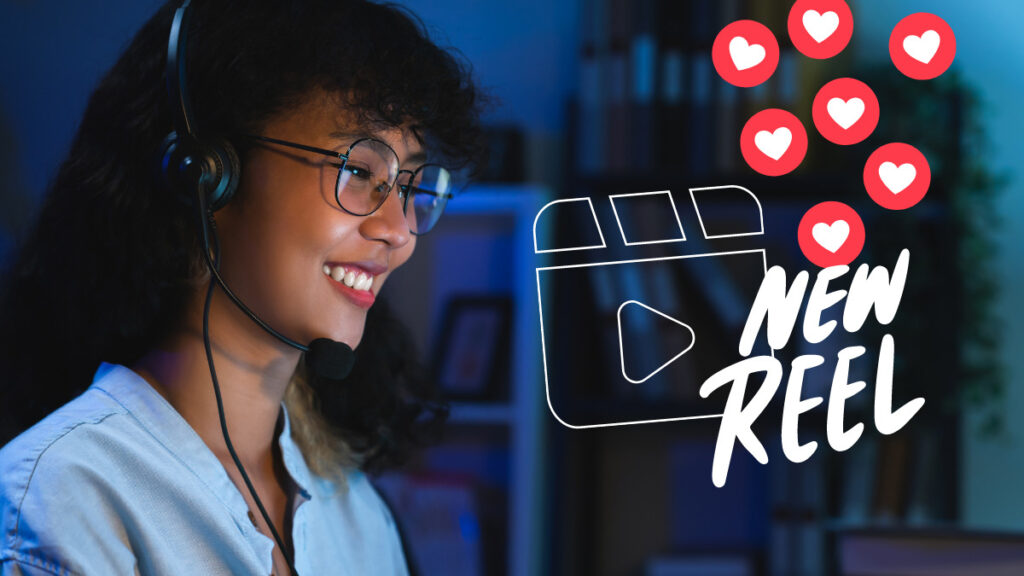
Facebook Reels: what you need to know
Something big happened in 2021, though not everybody noticed it.
That was the point at which TikTok overtook Google—yes, Google—as the most popular domain on the entire Internet.
To call that “no small feat” would be an understatement. TikTok was relatively new on the scene back then, and its rise to popularity threw shockwaves into the social media industry.
TikTok’s short-form videos had taken the Internet by storm. But it clearly wasn’t just a passing fad. For everyone else to keep up, they’d have to at least consider investing in similar video platforms.
Not too long after that, Facebook entered the fray, bringing Reels wider in 2021.
What’s the difference?
“We’ll be honest,” says Android Authority. “[TikTok vs. YouTube Shorts vs. Facebook reels] are mostly the same.”
Reels are Facebook’s answer to TikTok. It wouldn’t make sense for Facebook to ask creators to produce Reels without some monetary incentive. Even if the bonus program goes away—as it’s scheduled to do—Facebook has to at least keep par with TikTok.
That’s where you come in.
You can produce Facebook Reels to make videos out of music, audio, effects, or text overlays. Feel free to use the full gamut of options your creativity requires. Just make sure these are original.
When you post a Reel, it will go directly to any fans you have in their news feed. But it might also spread to new audiences in a dedicated “Reels” section of the feed.
That’s a recent innovation at Facebook. They’re trying to make both Facebook and Instagram more like TikTok and YouTube. And that means broadcasting Reels to more than just your followers.
In that way, Facebook Reels can provide you with the potential to reach a new audience: people who saw your Reel before they ever heard of you.
Facebook Reels monetization requirements
The bonus program was invite-only, which limited how many people could create Reels and expect to start sharing the revenue they created.
You shouldn’t expect that to change too much unless Facebook announces new monetization requirements.
In other words, expect that you’ll have to make a splash, or build a sizable audience, to “unlock” monetization.
How do you begin? You’ll have to create reels from your page or from a profile set to “professional” mode. This should immediately reveal that Facebook wants you to take a businesslike approach to it.
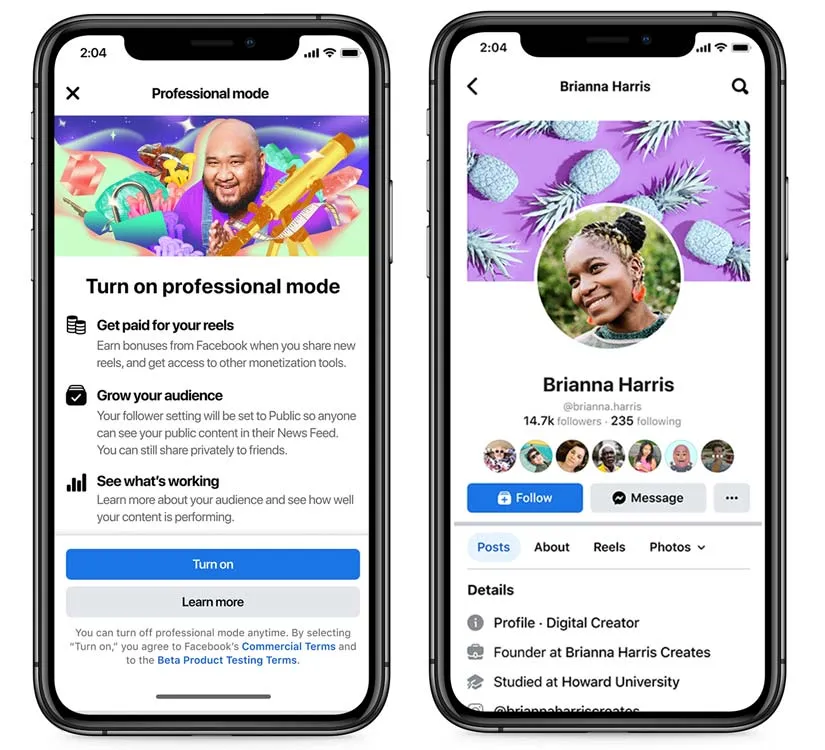
In the future, it may be that you use Overlay ads to monetize Facebook Reels. This would be independent of the “creator fund” style approach that Facebook has used in the past.
It might help to learn the two types of overlay ads currently on Facebook Reels:
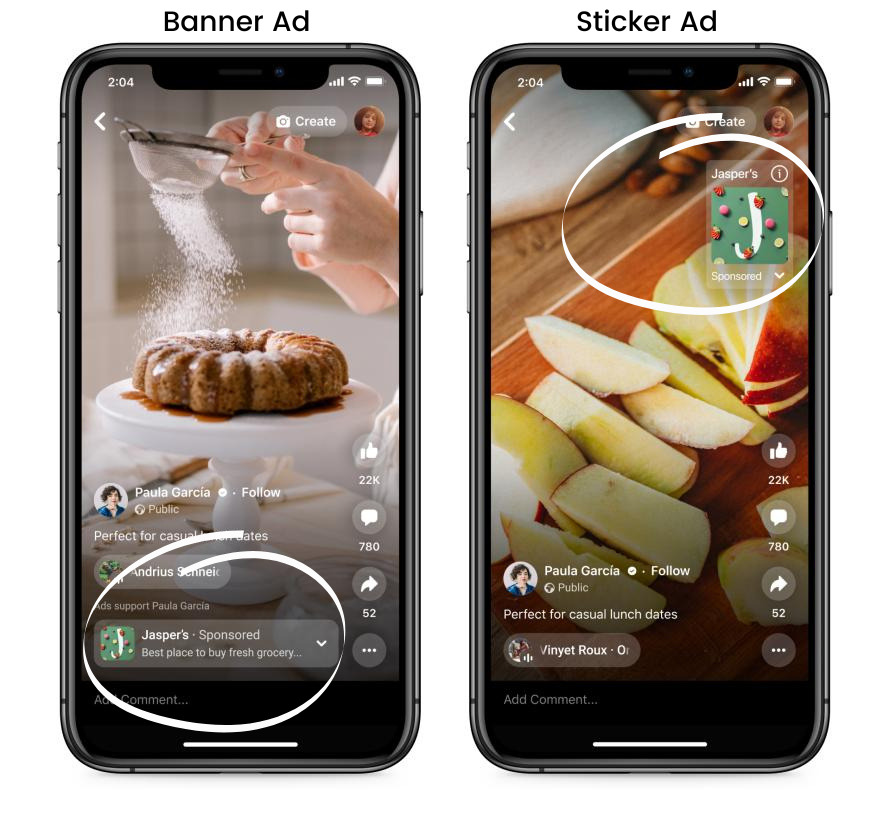
- Banner ads are currently the default setting for these Overlay ads if you’re already part of an in-stream ad account with Facebook. As per standard web parlance, these ads lay over the top of the ad, tempting the viewer to click.
- Sticker ads give you some more control. Tap Stickers in the right-hand menu panel, tap “Ad,” then “Add Sticker Ad.” You can drag the sticker to the appropriate place in your video—and sometimes, it’s a good idea to have this place in mind even before you produce the Reel.
As with all Facebook Reels, there are some eligibility requirements here for what Facebook calls “in-stream ads.” You’ll have to be at least 18 years old, have a minimum of 5,000 followers, and have 60,000 minutes total viewed over the last 60 days.
That’s why it’s worth getting these requirements out of the way. Prepare yourself to meet these standards before you can fully monetize your Reels.
Facebook Reels settings
Before you start, it’s a good idea to get familiar with the default Facebook Reels settings. That way, you can produce Reels with consistent branding.
You also don’t want to run into potential issues with visibility. For example, the “Default audience” selection is key here:
- Public: This sets it so anyone—including people who aren’t signed into Facebook—can see the Reel. This is best if you want to max out on views. Keep in mind that this setting means other people on Facebook can use your original audio in their Reels, or create remixes from your Reel.
- Friends: In this setting, only friends on Facebook can see your Reel. Not ideal for maximizing view count. There’s also a setting for “Friends except…” which lets you exclude certain friends from seeing your Reel.
If you’ve published existing reels and want to change them, you can go ahead and change the settings to Public as well.
How to set up your Reel
Start out with a profile on business or “professional” mode. If you can’t even access your Reels just yet, you may be using a personal account without the right settings.
How do you create your first reels? Let’s briefly cover the basic steps, assuming you’re working from a phone:
- Open Facebook, being sure that you’re using the latest version of the app. If not, give it a quick update and reload.
- Navigate to the “Reels” section under your Feed, then tap “Create.” Otherwise, you can tap the camera icon in the top right corner when you’re looking at someone else’s Reel.
- Now it’s time to add a video to your Reel:
- Tap the “Record” button to add a new video.
- Tap the photo icon in the lower left corner if you want to add existing video clips to the Reel.
- To add audio, text, and other effects, you can tap those icons on the right side of your screen.
- When done recording, tap “Next.”
- Write a description for your Reel. Hit your major keywords here. You can also explore similar Reels to see what competitors are using in their videos—though you shouldn’t expect keyword selection to make or break any given Reel.
- Choose an audience for your Reel—ideally, if you’re monetizing it and it’s fit for public consumption, you’ll mark it Public. (Note: that’s also what they’re listed by default, so if you want a private video, you’ll have to change those settings at this stage).
- Tap “Share Reel,” and it will publish your Reel to your feed.
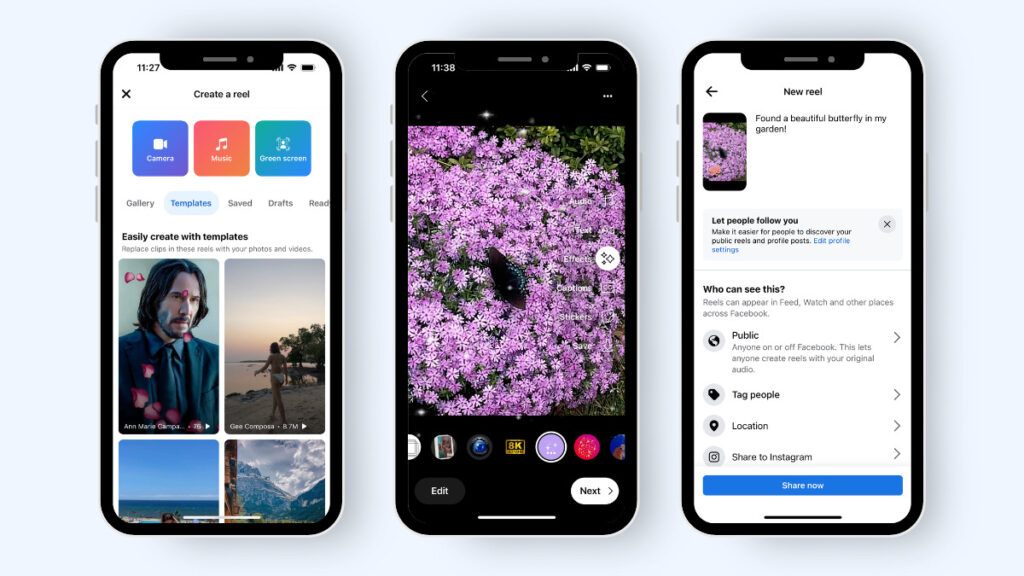
Is your work done? Not if you want to maximize views. The name of the game with Facebook ads is to get more views. More views, more advertising revenue in your pocket.
Here are a few things you can do to share those Reels and enhance visibility beyond appearing in your feed:
- You can update your privacy settings to “Public” and make that permanent. This should prevent you from accidentally publishing any private videos.
- When you create a Reel, it will go to your Reels profile as well. Your audience can then see every Reel you’ve published. Think about the value of each Reel on that part of your profile before you publish.
How to make the most of Facebook Reels monetization
Ready to learn how to monetize Facebook Reels? Let’s talk about what goes in the Reel. You can hardly expect a Reel to gain widespread popularity if it’s not drawing attention.
Facebook has plenty of options for customizing each Reel if you’re building it within the app, including:
- Audio, like adding a song from the Facebook music library. You can also produce original audio, which Facebook will attribute to you. Keep in mind that if you share it publicly, the Facebook community can use your audio to create their Reels.
- Speed: Slowing down or speeding up your video can have all sorts of effects. Use it to gussy up a recipe video, add humor to a clumsy situation, or to show behind-the-scenes work, like a wedding DJ speeding up the setup process.
- Timer: Don’t have an extra cameraperson handy? Set it to a timer and record hands-free.
Those are the basic ingredients. But let’s talk about the best recipes.
What are the best formulas for using Facebook Reels to get engagement?
Client wins
If you work in a service-based business or in B2B, post your client wins.
Let’s say you’re a fitness trainer who helps whip people into shape. Showing a client who succeeded with your program ticks all sorts of boxes:
- It serves as a testimonial: showing a client with specific results acts as “social proof” that your service is worth what you say it is.
- Offers an element of transformation. A good before-and-after highlights the key benefit of your service. When someone sees a Facebook Reel of a transformation, they’re inspired to make the same change—by reaching out to you.
- Creating a moment of emotional resonance. Maybe a client has an uplifting story about how getting fit changed their life. That sort of emotional resonance will strike your exact target clients.
Your process / behind the scenes takes
Flipping burgers. Not fun, right? The very definition of a mundane job?
Not exactly. Take Stephen Patula’s channel, which has earned nearly half a million followers on YouTube.
The channel’s subject? Behind-the-counter scenes at a McDonald’s.
People are fascinated with looks behind the curtain, peeling back the layers of either professions or unique lifestyles. Offer the same with your next Reel and you might be surprised at the results.
Photographer James Maher uses a similar approach for his lead magnet, The New York Photographer’s Travel Guide. Part instructional, part glimpse behind the curtain, it’s exactly what people who want to get into photography are interested in.
It wasn’t the only strategy Maher used. He also grew with Facebook ads that spoke directly to people who wanted in on the New York City photography scene.
If James were making Facebook Reels, he might create videos in a similar vein. “How much equipment I use as an NYC photographer,” for example, to highlight what he carries with him every day.
Yes, it would be relevant to photographers. But even people with a slight interest in photography would probably appreciate a look behind the scenes. It’s in our nature—we can’t help but be curious.
Give away a sample
Let’s say you’re working on a recipe book. You want people to think about your recipes, to share them, to sign up for a newsletter where you give out the latest recipes.
But how do you get their attention in the first place?
Simple: use Facebook Reels to “give out a sample.”
In this case, you could create a video that’s a 30-second wrap-up of a recipe. Include a list of ingredients, fast-forward the cooking, and show the finished product.
Skinnytaste uses recipes to entice people to sign up for its newsletter. But even before you do that, you can use the “giving away” strategy to hook attention.
Giving away part of your goods is valuable to viewers, sure. But it also has a built-in effect: it establishes your credibility.
If one Facebook Reel recipe looks good, how good must the newsletter be? Or the entire cookbook?
Fix-this-mistake videos
Want a way to create instant emotional resonance? Memorize three words: “fix this mistake.”
No one wants to feel like they’ve been doing something wrong for months—or, worse yet, years. Calling out a common mistake in your industry is bound to attract attention.
Think:
- Have you been doing lat pulldowns wrong?
- Stop saying this phrase to every B2B client
- A simple ingredient you’ve been missing for perfectly poached eggs
Notice the emotional charge each topic brings to the subject? It’s instant FOMO, or fear of missing out.
Athlean-X is a popular fitness channel and newsletter that constantly calls out fitness mistakes. It’s a great way to engage someone’s attention, especially with their promise of “24-second fixes” to correct the viewer’s form.
Something personal
This one works on the same principle as the “behind the scenes” Reel idea. But rather than a professional look behind the scenes, it takes a different approach. It gets personal.
Did you decide to take a day off and walk your dog along a beach? Post it, along with a caption explaining your decision.
Did a client send you a snazzy thank-you gift that merits attention? It’s a perfect look at the personal nature of B2B work—and a sly testimonial as well.
If you run a business, these personalized videos don’t necessarily need to be a habit. But they can help establish emotional resonance as your audience views the person behind the videos.
Believe it or not, some of the best audience-building you do will never feel like audience-building.
Five ways to boost your Facebook Reels monetization
Post the Reels above consistently and you’re sure to build an audience online. But let’s talk about the science of making real money with Facebook Reels:
Be consistent
Remember: Facebook needs to see a consistent posting history in your account to grant you this ability. But once you have it, it’s possible to drive views to your Reels directly and pull in ad revenue.
Drive views to your Reels
When a platform measures your revenue in views, it simplifies things. If you want to monetize your Reels, the fastest way to do it is to drive it from another source.
Lisa Niver’s newsletter is a great example of this: highlighting YouTube, TikTok, and Facebook Reels that its viewers can check out. It’s a simple ask and a simple link—yet if your audience is significant enough, it can drive real traffic.
Build a “lookalike audience”
Do you have an engaged audience already? Then you know what kind of messaging resonates with them. The challenge is finding that same audience on a new platform.
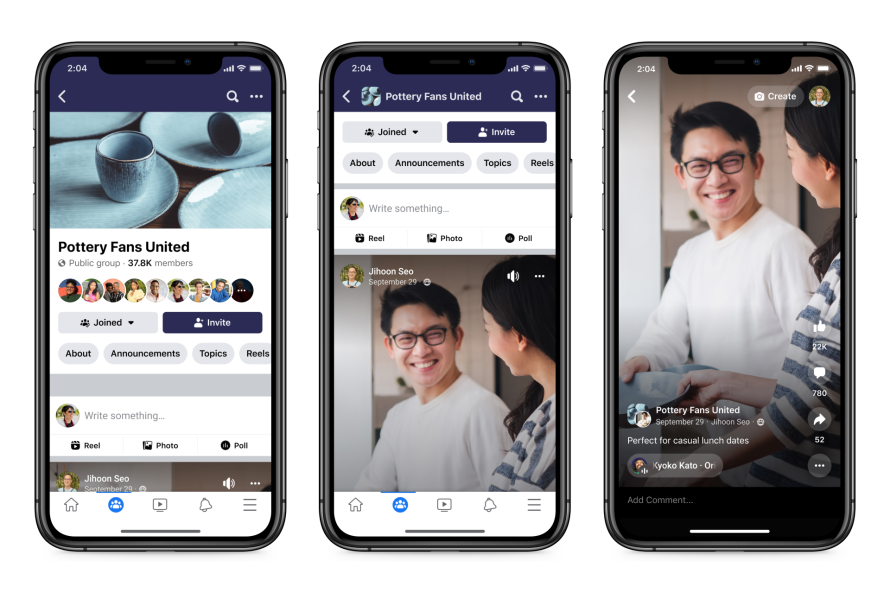
Facebook offers a fun feature here: the lookalike audience.
“A lookalike audience uses an existing Custom Audience you select for its source audience,” writes Facebook. “To create a lookalike audience, our system leverages information such as demographics, interests, and behaviors from your source audience to find new people who share similar qualities.”
In other words, you can find the same type of user base on Facebook with existing demographic data.
Think of it as a way to shorten the learning curve on Facebook. There’s no reason you should have to start over and figure out the best messaging for a new audience.
Build a Facebook-only subscriber list
What if your entire newsletter audience doesn’t love Facebook? Then AWeber makes it possible to create a segment that isolates those who might.
With the AWeber Facebook integration, you can build a “Facebook-only” subscriber list that allows you to send emails only to those who use the platform (excluding those who don’t, as it’s irrelevant), making for a more personalized email experience overall.
Paula Rizzo, for example, utilized subscriber lists to organize her audience into the following segments:
- A blog list for people who came to her from her blog
- Her email course list for people who signed up for the course
- A list of people who have simply bought her book
Add a list of people who found you through Facebook Reels and you have a unique customer segment. They’re the people more likely to appreciate it when you’ve updated your page with a new Facebook Reel.
Use AWeber to send newsletters to that list—and that list alone—and you’re likely to gain views without alienating the people on your list who don’t visit your Facebook presence.
Give away some value
Remember the idea of giving away a recipe? Here’s an example of how it works on Reels, part of a low-carb/keto playlist.
This playlist serves as a mini-course on Facebook. It’s like a free class. And if people enjoy that “class” enough, they’re going to be more willing to sign up for your newsletter when they view your profile.
Note: you don’t always have to do things this way. TikTok-style Reels are just as successful when you want to provide value for your audience. It all depends on how you want your brand to come across.
Increase your views with email
When you have an established newsletter audience, monetizing Facebook Reels can be as simple as publishing a few videos, activating the ads, and sending out a link.
But that assumes you have an audience. Ready to start building yours?
Integrate your newsletter audience with your Facebook presence whenever possible. Get started with AWeber to integrate your Facebook presence with a captured email audience.
The post From viral videos to profit: How to monetize Facebook Reels appeared first on AWeber.
from AWeber https://ift.tt/6hSq0wR
via IFTTT
No comments:
Post a Comment